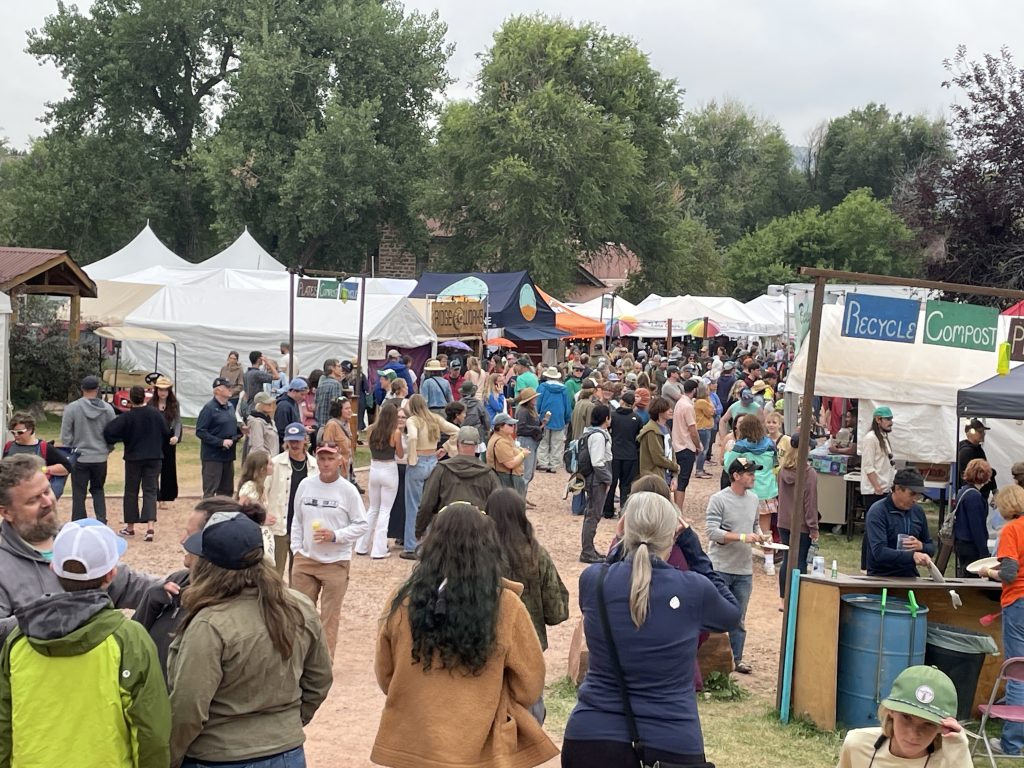— by Jon Lybrook, Lead Printmaker & Owner, Intaglio Editions LLC
 Summer Art Fairs are a great way to expand your list of collectors and supporters! I used to do alot of summer and holiday art fairs about 10 years ago, but stopped due to the amount of work I was doing with other artists, photographers, and printmakers. That plus internet marketing and consulting work meant there just wasn’t time. We continue to produce custom, high-quality intaglio plates and prints for photographers, printmakers and other small businesses world-wide, but not like we were in the early 2000s. |
| Researching, preparing, and showing at quality outdoor art festivals can take alot of time, planning, hard work, and money, but if they are effective for you, and you are committed to doing them every year, they are an excellent way to gain a new, growing audience of fans, supporters, and repeat buyers. |
- Visit the festivals in your area before registering to show your work – Walk the grounds, talk to vendors, and get a feel for the crowd, layout, and location to determine if it’s a good fit for your artwork and price-point.
- Start Small and Stay Local – Begin with nearby shows to minimize stress and travel costs while learning the ropes of outdoor selling. Do a dry-run setting up your tent, your walls, hanging work, and breaking it all down again. Time yourself with the goal of improving efficiency. Do this well before the show, and you’ll know what to expect.
- Talk to fellow artists already showing there – Other artists can offer priceless insight into their experiences – especially if they’ve done a particular show more than once. Ask about the reliability of the promoter, visitor and sales numbers, and whether the show would be worth doing again to them, or if it was a big mistake! What is their highest priced original work, and what are they charging for inkjet prints of it? Learn from your peers.
- Give yourself plenty of time to prepare – Weeks or even months of prep may be required to build inventory, create signs and post cards, package artwork and prints, design your layout and display, notify your social media followers, and email list of collectors — and test your payment system!
- Provide a wide price range – Offer everything from $5 stickers to $500+ originals, large, handmade prints or 1/1 monotypes. If you’re an intaglio printmaker specializing in photogravure, offer smaller matted inkjet prints of your most popular prints. These will cater to a broader range of supporters and art collectors, and bring in extra cash.
- Bring business cards and/or promotional postcards – Even if someone doesn’t make a purchase, give them a tangible reminder of you and your work to take home and possibly follow up later. This simple promotion technique works!
- Offer high-quality prints in multiple sizes – Affordable inkjet prints are a great entry point for new collectors and make your work more accessible. Handmade prints such as photogravure, etchings, or monoprints painted with watercolors show your range of classic art interests and abilities. Provide both options and a price range between $25 (for 8×10″ inkjets) and $500+ for your biggest and best traditional fine art prints or original drawings / paintings.
- Be sure you bring the “Cadillac” – Feature one or two striking, large, and high-end pieces that show off your best work. Hang them on the outer walls of your tent, if possible, as well as inside. Even if they don’t sell, they show commitment to your abilities and elevate your booth’s atmosphere.
- Have promotional “loss leaders” for your supporters – Offer inexpensive or free items (like mini prints or stickers) to build goodwill, especially for returning or loyal fans.
- Avoid shows that focus on jewelry or low-dollar craft items – These events often attract bargain-hunters rather than serious art collectors, and your work may not get the appreciation it deserves.
- Ignore the loud, drive-by critics – Not everyone will “get” your work—don’t let quick or dismissive comments shake your confidence.
- Stay hydrated – Outdoor summer shows can be brutally hot; bring water, low-sodium snacks, and perhaps a cooling towel or portable fan if electricity is provided.
- Engage prospects – Don’t hide in the back — but also avoid hard selling —instead, have relaxed, open conversations. Ask them about themselves, their interests, and let your passion and confidence naturally draw buyers in. Read “The Art of Seduction” by Robert Greene: https://www.youtube.com/watch?v=_LEQHQNsWOc
- Track sales and inventory – What sold? What didn’t? Adjust future show plans accordingly – Use a spreadsheet or inventory app to track what moves at each show, helping you refine your offerings and avoid spending good time and money after bad.
- Accept credit cards – Square, Paypal, and other providers offer free phone apps and inexpensive credit card readers you can use wherever you have wifi or cellular service. Most buyers expect the convenience of cards—if you don’t have the ability to process them on site, you could be missing out on sales.
- Bring a cash box with change – People still use cash, especially for lower-priced items. Keep small bills and coins handy—some buyers will appreciate a fast, no-hassle cash transaction. Have a pad of receipts handy in case the buyer wants a record of the sale – write the name of the piece on the receipt, and staple your business card to it!
- Differentiate your work from the competition – Use unique themes, color combinations, quality framing, signage, demo materials, or storytelling to stand out from the sea of artists and create a lasting impression. If you are a photographer or illustrator, instead of only providing low-cost inkjet prints of your best work, offer traditional prints on heavy-weight, etching paper.
|

